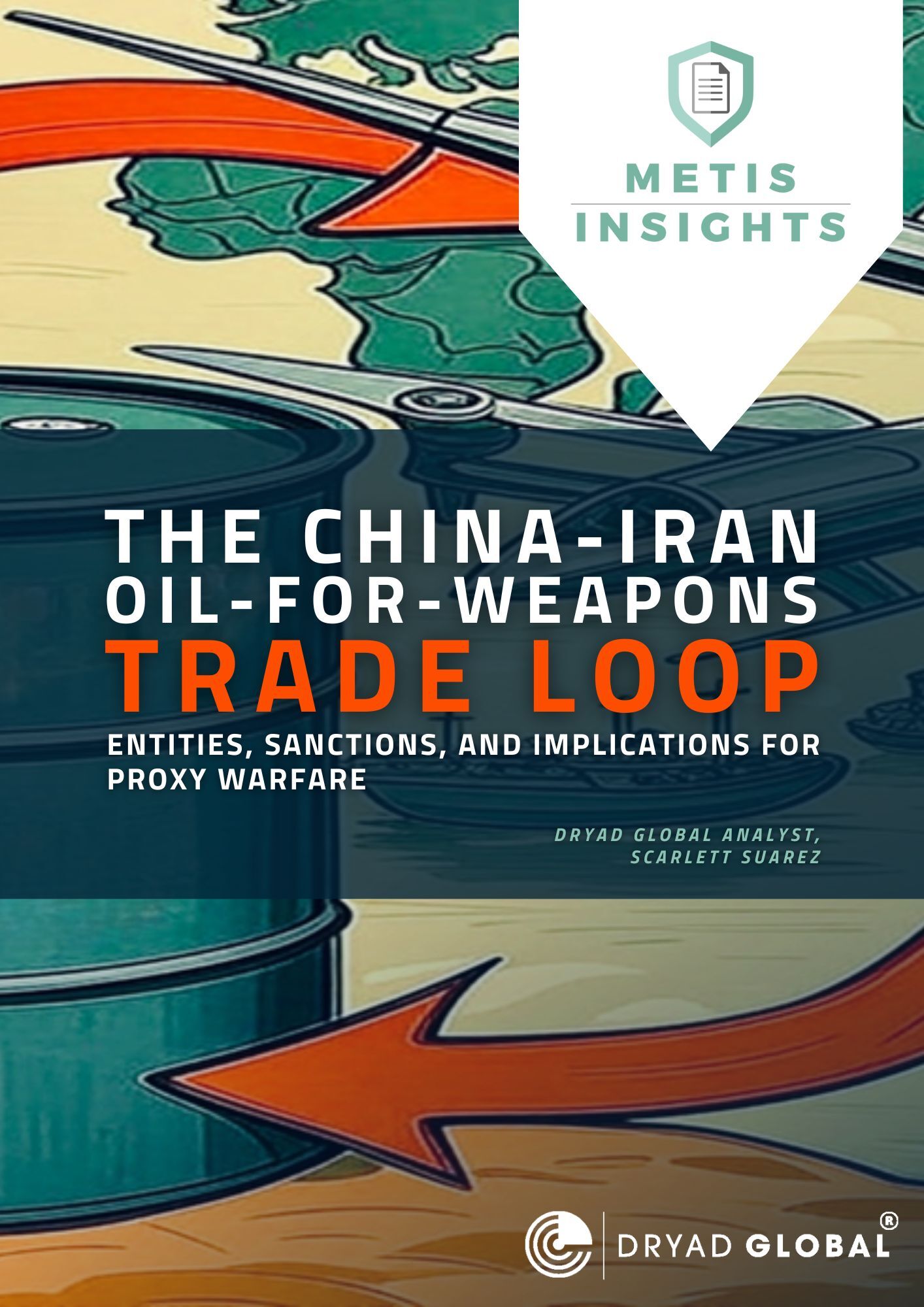Dryad Global has released a new Metis Insights report that maps the fast-evolving China–Iran oil-for-weapons loop—and what it means for shipowners, charterers, P&I, ports and traders. Authored by Dryad analyst Scarlett Suarez, the paper traces how sanctioned Iranian crude, Chinese buyers, and a growing “shadow fleet” are reshaping commercial risk across Asia and globally.
-
Sanctioned volumes remain high. Iran exports an estimated 1.5–2.0 million bpd, with 80–90% heading to China—revenue that sustains proxy activity and procurement.
-
Aging tankers, higher incident risk. A ~477-ship shadow fleet—~70% of it 15+ years old—moves much of this oil via AIS-dark legs and STS transfers.
-
Sanctions pressure vs. persistence. Despite 19 rounds of U.S. actions designating 250+ entities/vessels in 2025, flows adapt via yuan payments, barter, front companies and paperwork fraud.
What’s new in this report
Direct oil-for-arms linkages. The paper documents October 2025 negotiations between IRGC/AFGS and Chinese firms (e.g., Haokan) that explicitly tie oil shipments to missile/drone component deliveries—escalating both compliance and security exposure for any vessel or counterparty touching these trades.
Where the risk concentrates. The analysis highlights deliveries into Shandong “teapot” refineries via terminals such as Rizhao Shihua and facilities around Daya Bay and Dongying, often after AIS-dark STS operations and origin relabelling (e.g., “Malaysian” crude).
Governance erosion. A parallel tanker “dark pool”—now ~10% of global oil-tanker capacity—normalises non-compliance (AIS off, flags of convenience, falsified certs). That trend threatens to fragment maritime governance and increase spill, casualty and enforcement risk for legitimate actors.
Why shipping should care now
-
Operational exposure: Older hulls and frequent STS in busy sea lanes (South China Sea/Malacca approaches) increase collision and pollution risk—and associated uninsured liabilities.
-
Compliance complexity: Fraudulent certifications and front-company networks raise the chance of inadvertent sanctions breaches for owners, charterers, financiers and insurers—even on seemingly routine legs.
-
Security knock-ons: Persistent revenues fuel proxy capabilities (e.g., Houthis), driving route diversions, higher insurance/freight and wider supply-chain disruption.
Who should read this
-
Owners & operators screening voyages and counterparties
-
Charterers & traders managing origin risk and documentation chains
-
P&I/insurers assessing casualty, sanctions and ESG exposure
-
Ports/terminals refining pre-arrival checks and PSC posture
What you’ll take away
-
A clear map of the entities, ports and logistics enabling the loop
-
Evidence of AIS-dark tactics, STS hotspots, relabelling practices
-
The latest on sanctions rounds and how evasion networks adapt
-
Practical implications for due diligence, voyage screening, and audit trails
Metis Insights is powered by real-time intelligence, human and AI-enhanced analysis, and global expertise, giving you the edge in maritime decision-making.
🛡️ Stay informed. Stay secure. Stay Dryad.




